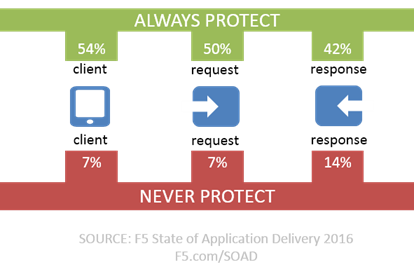Última Milha da Segurança: O Usuário
Quando falamos sobre “a última milha” em redes, geralmente estamos falando sobre aquela parte da Internet onde os dados se movem entre a rede do provedor e a rede do usuário. Costumava ser uma única máquina para a maioria dos consumidores. Hoje em dia, é a combinação de roteador/ponto de acesso que é, em última análise, outra rede.
Isso ocorre porque, de modo geral, essa é a parte do pipeline sobre a qual nós (como fornecedores de soluções projetadas para otimizar o desempenho) não tínhamos controle real. Naquele momento, tudo o que podíamos fazer em termos de acelerar a entrega do aplicativo, já tínhamos feito. Porque não podíamos realmente mexer nos dispositivos que formavam aquela última milha entre o provedor e o usuário.
Isso ainda é verdade hoje, embora certamente ainda existam maneiras de mexermos nas camadas de ordem superior da rede (camadas 4 a 7) para melhorar o desempenho, mesmo sem esse controle. Mas quando se trata de segurança, especialmente para aqueles cuja base de usuários principal é o consumidor, a luta da última milha é muito real.
Isso ocorre porque a última milha para a segurança é o usuário; ou para ser mais preciso, o dispositivo do usuário, o PC ou aquela "coisa" que reporta de volta ao seu aplicativo-mãe no céu (também conhecido como nuvem). Como muitas das interações que ocorrem entre consumidores e fornecedores envolvem dinheiro, há uma necessidade muito real de um alto nível de sensibilidade em relação à segurança dessas transações.
O que, assim como os desafios de desempenho do passado, são realmente muito difíceis de resolver quando você não é dono da “última milha”.
Isso pode explicar por que 30% dos entrevistados na pesquisa State of Application Delivery deste ano disseram que uma “proteção de endpoint antifraude” era importante para que sua organização adotasse a computação em nuvem.

Considere que, hoje, esses mesmos entrevistados estão protegendo aplicativos em todo o espectro de comunicação: do cliente às solicitações que eles fazem e às respostas retornadas. Embora as organizações pareçam variar com base na aplicação, há um número significativo de organizações que sempre (ou pelo menos foi o que nos disseram) habilitam a proteção em todos os três vetores de ameaça em potencial.
Dado o crescente volume de malware e o sucesso contínuo das expedições de phishing, não é surpresa que muitos estejam desejosos de proteção antifraude no cliente (endpoint) para nuvem. Seria surpreendente se isso também não fosse verdade para aplicativos locais.
A proteção antifraude visa habilitar a segurança para a “última milha” – o usuário – em um mundo de aplicativos onde o controle sobre dispositivos, coisas e aplicativos nas mãos do usuário nem sempre é possível. A proteção antifraude moderna é frequentemente considerada uma preocupação puramente do setor financeiro, mas a realidade é que apenas 25% do malware do mundo real é detectado por antivírus e, embora possa ter como alvo as finanças com as quais os usuários finais interagem, como o texugo-do-mel, ele não se importa se as credenciais corporativas forem vazadas no processo. E quando eles estiverem no mercado aberto, você pode apostar que alguém pagará por eles.
O perímetro de segurança está mudando. A nuvem, a desagregação de aplicativos em microsserviços e APIs e a entrega de aplicativos móveis nativos causaram uma mudança drástica do tradicional muro de castelo para uma abordagem mais móvel, de "fechar fileiras", para proteger aplicativos. O “aplicativo” agora é o perímetro, mas devemos estar vigilantes em nossos esforços para garantir que nenhum componente do “aplicativo” seja deixado de fora, e isso às vezes significa estender um perímetro ao redor do cliente, mesmo que apenas temporariamente.
A proteção contra fraudes na Web não é mais apenas para serviços bancários. Empresas preocupadas com a força geral de sua postura de segurança e comprometimento em “sempre” proteger o cliente precisam avaliar a proteção antifraude moderna em termos de como ela pode ajudar a evitar que malware, vírus e outros ataques furtivos escapem com credenciais corporativas.
